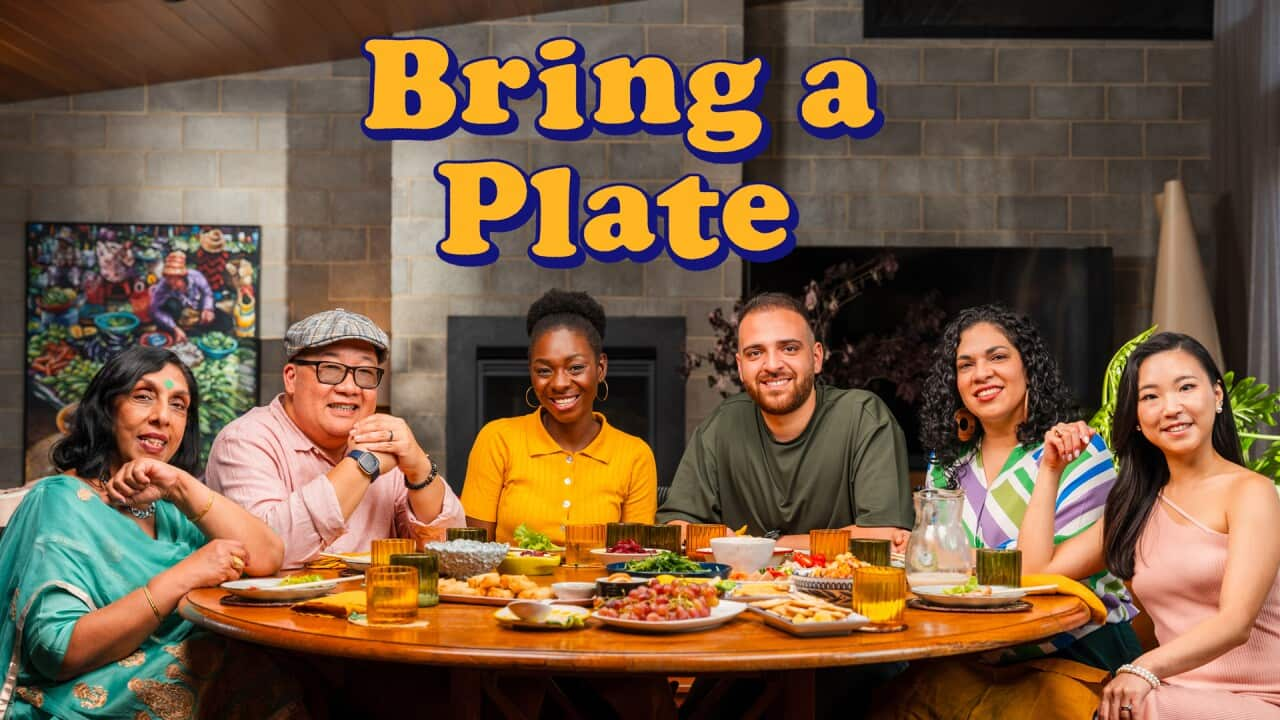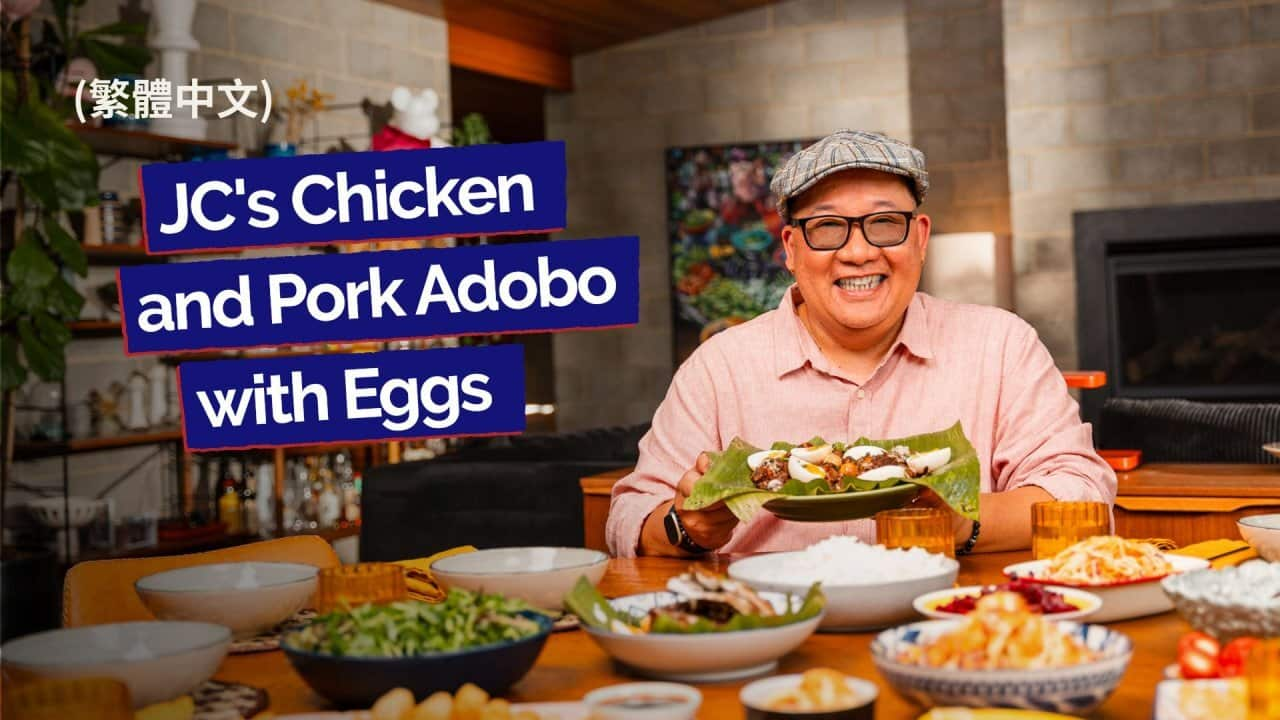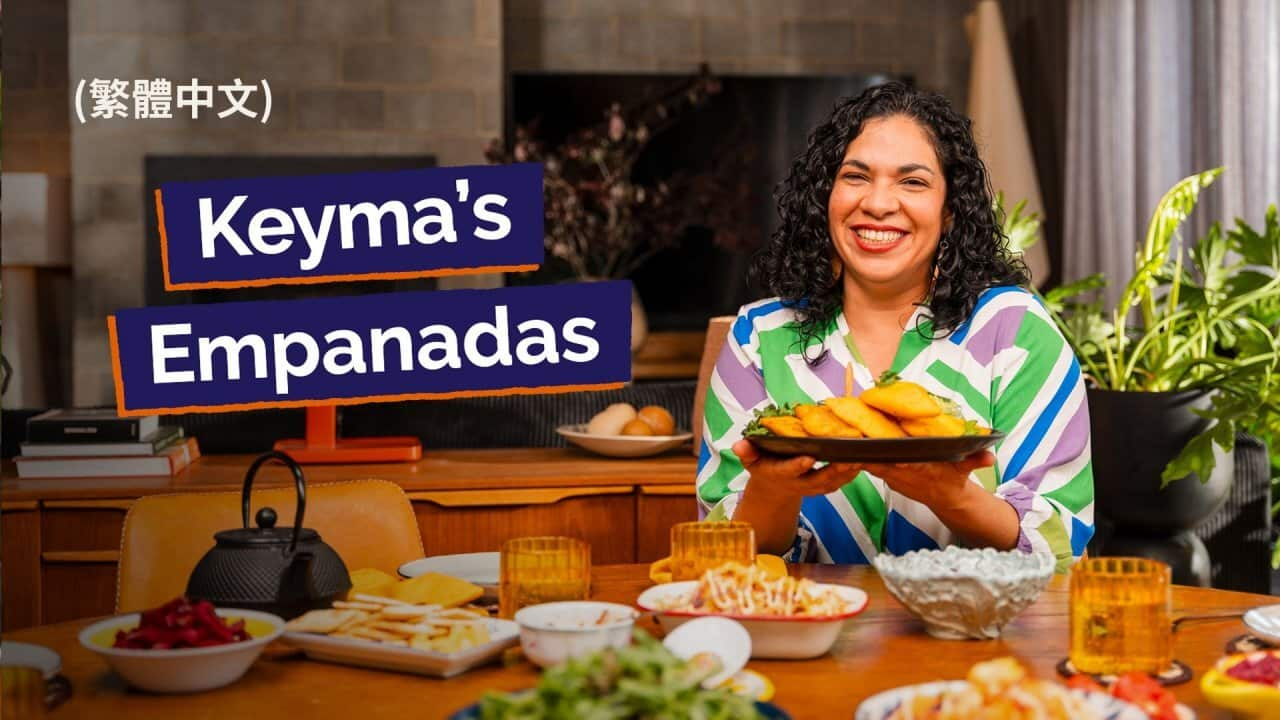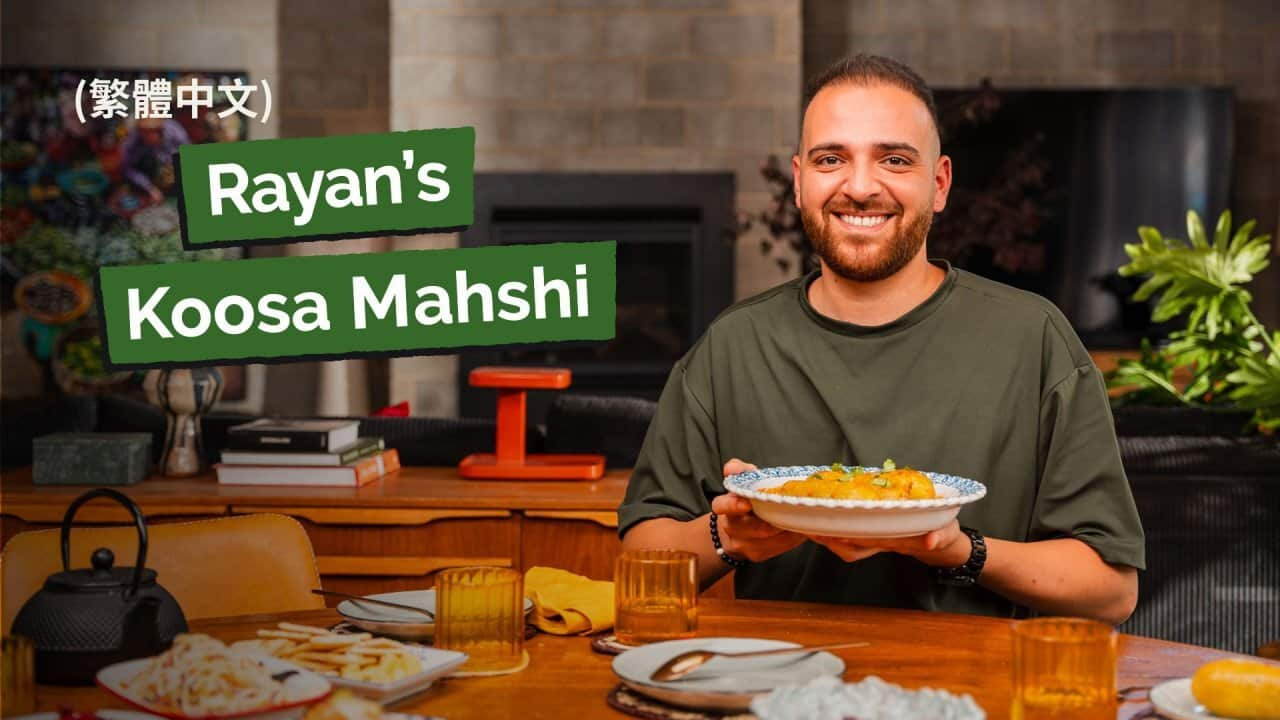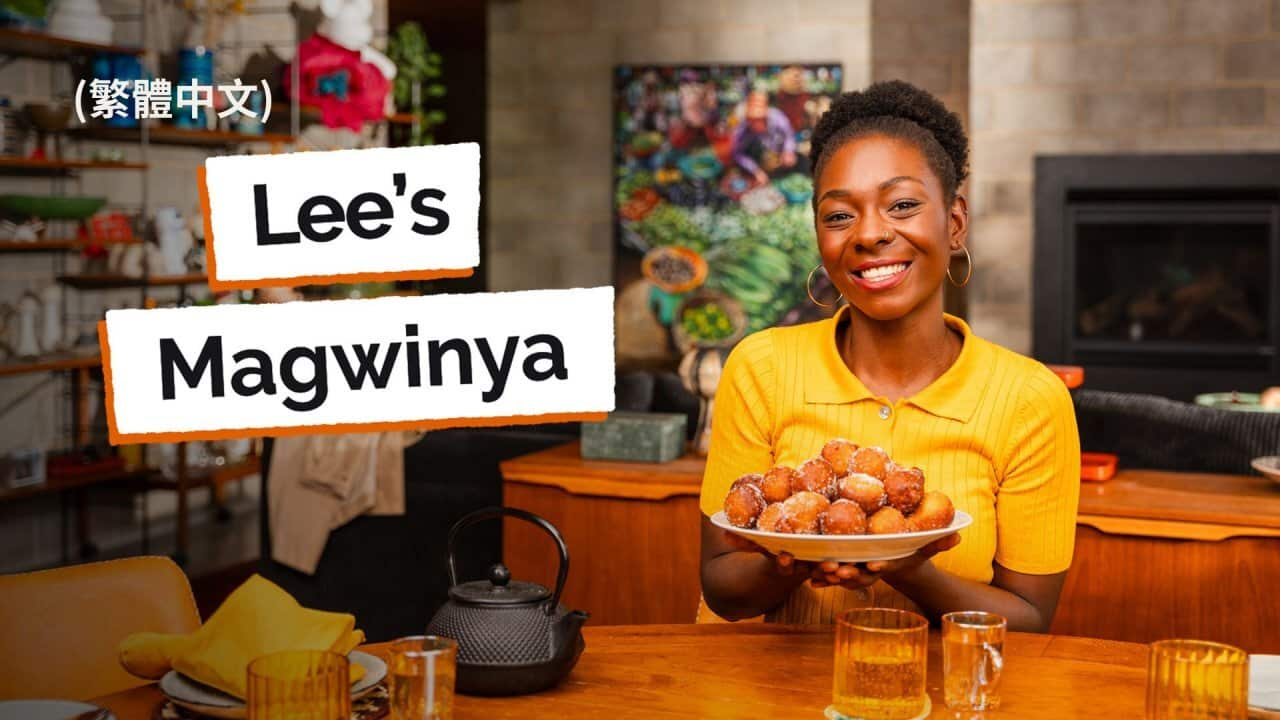和六位賓客一邊品嘗美食,一邊學習英語,也學習被邀請帶備食物分享時怎樣介紹你的傳統菜色。
Links:
- 在收看 Bring a Plate。
獲取食譜

Poori chole
Transcript
Narrator: What does it mean if you are asked to bring a plate? An empty plate?
[crickets chirping]
Oh, I get it. Bring a plate. In Australia, bring a plate means to bring a plate of food to share. In this series, we'll learn about the English language. So next time you're asked to bring a plate, you'll feel more confident in sharing your dish with others and asking about theirs.
It's all about coming together.
Welcome to "Bring A Plate".
JC: What's everyone's opinion on chillies?
Rachel: Well, I'm originally from Korea. In Korea we use chilli for every single dish.
JC: I actually like the taste of chilli, so take away the heat, the actual taste of chilli.
Rayan: Yeah, I love chilli as well. I just add chilli to anything. I love it.
Nimi: Well, in Australia, you go to an Indian restaurant and they ask you, "Indian medium or Aussie medium?"
Narrator: Indian medium for me. There's a simple way to talk about food. Let's refresh ourselves on DISH.
D is for describe.
I is for ingredients.
S, what is special about the dish?
And H, how do you cook it? How do you eat it?
Nimi: So here is the right time to introduce my dish today.
JC: Oh.
Nimi: And this is called Poori-Chole. This is from northern part of India, Punjab. And every Punjabi house has this, especially on Sundays. So this is bread, as you can say, but it is a fried roti and there's a pickle and chickpeas are spicy.
JC: Watch out, Keyma.
Keyma: It's gonna be too hot for me.
Nimi: For you? Hmm... Yes. The eyes will water.
Keyma: I'll try my best.
Narrator: That description sounds like a challenge.
Rayan: Tell us more about the ingredients of this beautiful dish.
Narrator: Good question, Rayan. It looks like a lot of ingredients.
Nimi: The poori is made of plain flour and semolina. So there together, though, of course fried after that. Yeah. And the chickpeas, 'chole', yeah. They are soaked overnight. And then we add all the pastes of ginger, garlic, green chillies.
Keyma: Oh wow.
JC: Yeah. Watch out.
Nimi: Fenugreek seeds. So many other things to add. Of course, the red chillies as well.
Keyma: All the spices.
Nimi: And turmeric, and some cumin and some coriander, the green one and the dry one, and then the pickle. It is a pickle which has carrot and raw mango. Okay, yeah. It's tangy.
Rachel: I think most of the Indian food is very spicy. Have you always liked the spicy food?
Narrator: Yeah Nimi, tell us about your special spicy dish.
Nimi: When I was a little girl in India, I love lots of different food now, but I was actually a very fussy eater. I was a plump little girl and I ate like a princess. Luckily, my mum was always very loving. When she would cook food for everyone else in the family, she would make a special plate for me. What? Poori-chole, just for me. My mum knew this was my favourite food. It's funny, because now it's my grandson, Anhad, who is the fussy eater and just like me. Can you guess what he asks for? Poori-chole, of course. He says he is not like me, but we are similar similar in many ways. He wants to be a chef, actually. He's only 10, but he's always cooking and reading the recipe books. So, the history is repeating itself.
Keyma: You convinced me. I have to try it.
Nimi: Oh, let's go ahead.
Keyma: I'm up for the challenge.
JC: So, should we go and give it a go?
Keyma: Of course!
JC: Let's do it.
[Indian music playing]
Keyma: So Nimi, how do you eat it if you don't like that much spice
Narrator: Yes Keyma. Also, does anyone have a napkin?
Nimi: The way you are eating now, you are managing it because you have little yoghurt with it. Yep. And you can have little drink with it. And the bread, the poori itself, it also balances the spice.
Keyma: Yeah. - This is my second.
Nimi: Yeah, that's why I didn't see any water in your eyes.
Narrator: What spice? I'm fine. And there we have Dish. Does anyone have a glass of water?
[Indian music playing]
Stream free On Demand

自带食物
